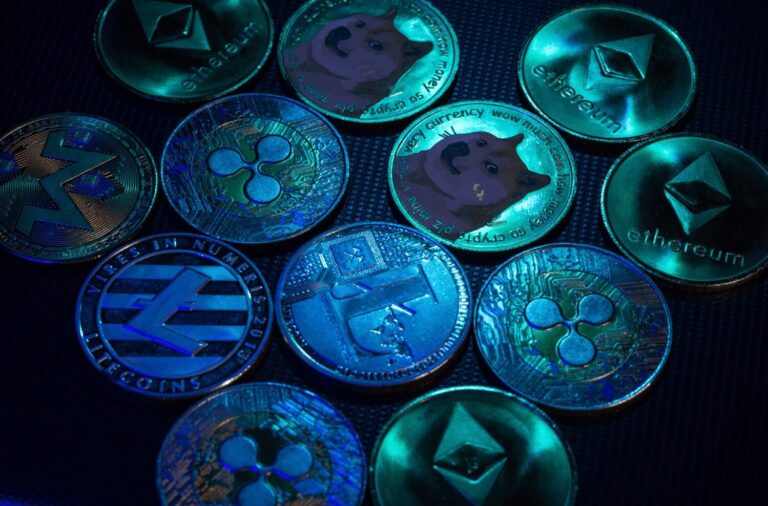
In the world of crypto, transferring assets might seem as simple as copy-pasting a wallet address and clicking “send”—but the reality is far more complex. Behind the scenes, even seasoned users occasionally fall victim to simple oversights that can result in costly, irreversible mistakes. And unlike traditional banking, there’s no customer service line waiting to reverse the damage. In crypto, the responsibility for getting it right lies squarely with you.
The good news? Most failed transfers are totally avoidable with the right preparation. If you understand how things can go wrong—and what to check before sending—you’ll dramatically reduce your chances of becoming the next cautionary tale.
Common Crypto Transfer Pitfalls
Some of the most frequent transfer issues boil down to small, easily preventable errors:
- Wrong Wallet Address: One misplaced character in an address can send your funds into digital oblivion—or worse, into someone else’s wallet. Unlike sending a misdirected email, there’s no “unsend” button in blockchain transactions.
- Incorrect Network: Transferring USDT over Ethereum when your recipient expects it on the Tron network? That mismatch could lock your funds out of reach, even though the token and amount seem correct.
- Underpaid Gas Fees: Skimping on fees can leave your transaction floating in limbo for hours—or indefinitely. On networks like Ethereum, where gas prices fluctuate with congestion, this is a common trap.
- Wallet Compatibility Issues: Not all wallets can receive every token or support every chain. Sending a token to an incompatible wallet may mean permanent loss.
One infamous example: A user accidentally sent tokens to Coinbase using an unsupported network, only to be met with a firm (and helpless) response from support. The funds? Gone for good.
Behind the Scenes: Why Transfers Sometimes Fail
Even if you do everything right, transfers can still fail due to network conditions or smart contract errors. Insufficient gas is often the culprit—set it too low, and validators may skip your transaction. In some cases, the transfer simply times out; in others, it’s stuck in “pending” purgatory.
DeFi users are particularly vulnerable. Glitches in smart contracts—code that automates blockchain transactions—can cause a transaction to revert or fail. Add in congestion on networks like Ethereum, where demand often outpaces block space, and you’ve got a recipe for failure even with the best intentions.
A study of over 1.5 billion failed transactions on Solana pinpointed bot spam and congestion as major disruptors. Even high-speed chains aren’t immune.
Your Pre-Transfer Checklist
If your transaction hasn’t gone through, don’t panic. Start troubleshooting with this checklist:
- Double-check the recipient address—always copy and paste; never type manually.
- Verify the network—Ethereum, BNB Smart Chain, Polygon, etc.
- Check the transaction status on a block explorer like Etherscan or Solscan.
- Review your wallet’s status—it may still be queued or pending.
- Confirm token compatibility with the recipient’s wallet.
Some wallets let you speed up or cancel stuck transfers by paying a higher gas fee. Time is of the essence, so acting quickly can sometimes make a difference.
Before You Send: Things to Always Confirm
Preventing transfer mishaps starts with careful prep. Always:
- Confirm the receiving wallet is active and supports the asset you’re sending.
- Match the correct blockchain network.
- Make sure you have enough of the chain’s native token to cover gas (e.g., ETH on Ethereum).
- Be mindful of platform-specific limits, regional restrictions, and daily caps.
In one devastating case, a trader lost $26 million worth of Renzo Restaked ETH (ezETH) due to a single copy-paste mistake. The funds were sent to the wrong address, and even top white-hat hackers couldn’t recover them.
Network Speeds and Expectations
Different blockchains clear transactions at different speeds. Solana, Tron, and Avalanche are built for speed, often confirming transactions in seconds. Bitcoin, by contrast, takes roughly 10 minutes per confirmation—and most exchanges require six of them. Ethereum speeds can vary dramatically depending on congestion.
If timing matters—like locking in a price or making a payment—choosing the right network is crucial. Don’t set yourself up for anxiety by expecting instant results on a slow chain.
When Regulations Block Transfers
Regulations like the Travel Rule can also cause failed transactions. This rule requires exchanges to share sender and recipient information for large transfers. If data is missing or mismatched, the transfer might get flagged or blocked.
This issue is particularly tricky for cross-border transfers or when dealing with self-custody wallets. And with evolving global regulations, expect more of these hiccups in the future.
A Cointelegraph Research and Onramper report revealed that 50% of fiat-to-crypto transfers fail, often due to location-based banking restrictions—even when KYC checks are complete.
Final Tips: Play It Smart, Stay in Control
To reduce risk:
- Send a test amount before committing to a full transfer.
- Use tools like Etherscan Gas Tracker to gauge the right fee.
- Don’t rush—haste causes most errors.
Always keep your transaction hash handy. It’s your proof and your best tool for tracking progress. Enter it into a block explorer for real-time updates on status, confirmations, and fees.
Bottom line: Crypto transfers don’t have to feel like playing roulette. The key is preparation. Triple-check everything, keep learning, and take your time. The more informed and deliberate you are, the more crypto becomes an empowering tool rather than a risky gamble.
Master the details—and you’ll master the game.


